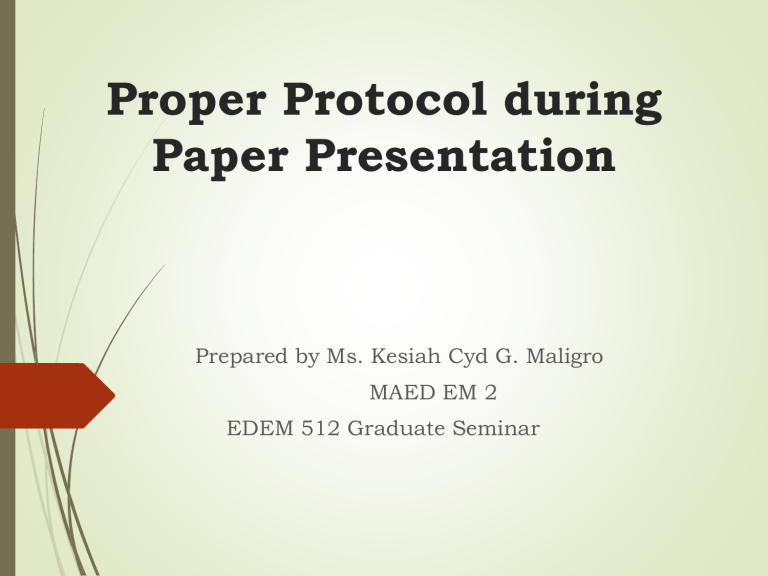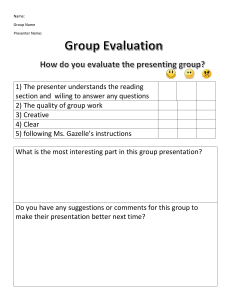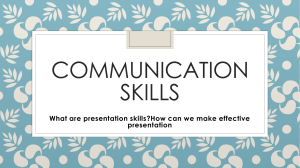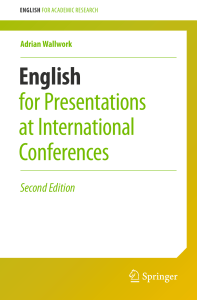
Proper Protocol during Paper Presentation Prepared by Ms. Kesiah Cyd G. Maligro MAED EM 2 EDEM 512 Graduate Seminar Key things to consider: An effective presenter should have led the study, participated in the analysis and drafting of the abstract and manuscript, i.e. the presenter should know the subject of his or her talk inside out. One should therefore be prepared to PRESENT: Plan from the start (place integral parts of the presentation in logical sequence); Reduce the amount of text and visual aids to the bare minimum; Elucidate (clarify) methods; Summarize results and key messages; Effectively deliver; Note all shortcomings, and Transform your own and the current thinking of others. Presentation guide Presentation in brief: Whether presentation is a group project or individual project. Think of this as a visual version of your paper. The presentation should include: a short intro, your hypotheses, a brief description of the methods, tables and/or graphs related to your findings, and an interpretation of your data. Title slide It has 1 slide. Title of the talk . The names of all group members, the class and university names, and the date the talk is given. Introduction Introduction (typically 3-4 slides) Explain why your work is interesting. Place the study in context – how does it relate to / follow from the scientific literature on this subject. If it relates to any applied issues (e.g., environmental problems), mention this here. Materials and Methods typically 2-3 slides Clearly summarize the design. Show a diorama of your experimental design (with sample sizes, number of replicates, sampling frequency, etc.). Mention what parameters you measured but do not go into detail on exact procedures used. Do state what statistical tests you used to analyze your data. Delivering a Presentation Effective presenters capture audience attention and stay focused on key messages .A study was performed at scientific conferences asking reviewers to identify the best features of effective presentations. The most frequent comments on best features of presentations with respect to ‘content' were identifying a key concept (43% of presentations) and relevance (43%). Best features in evaluations of ‘slides' were clarity (50%), graphics (27.3%) and readability of the text and font size (23%). Finally, best features in ‘presentation style' were clarity (59%), pace (52%), voice (48%), engaging with the audience (43%), addressing questions (34%) and eye contact (28%). Results (typically 2-4 slides) First show a photograph (or sketch) that shows an interesting qualitative results (e.g., trays of plants in which one set is noticeably bigger than the other, ) and state that result. Then display the results in graphical form, reminding the audience of your hypothesis and stating whether it was supported as you do so. Use simple, clean, clearly labeled graphs with proper axis labels. Implications and Conclusions typically 2-3 slides Correctly interpret your results. Acknowledgements 1 slide Thank anyone who provided advice or assistance. Verbally thank your audience for their attention and tell them you would be happy to answer any question. Thank you and God bless us all! Sources: http://www.swarthmore.edu/NatSci/cpurrin1/powerpointadvice.htm



